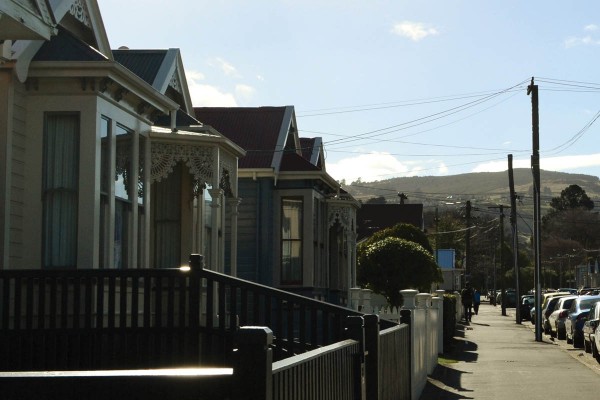Some truths are eternal when it comes to being a University of Otago student. You’re going to gain 20 kilos in your first year, only old people call us Scarfies, and living in a ‘notorious’ flat on Castle street is going to be expensive as fuck. But why is that? Not the 20 kilos (that’s because Mum and Dad don’t feed you anymore and portion control is hard) but why do we accept that student flats are shit and expensive, and that’s just how it be?
Critic did a bunch of door-knocking over the mid-semester break. Of those we talked to, the average flat in Castle Street has six tenants and they pay an average of $153 each (before bills and internet). Students living on Castle Street itself pay on average $7 more each than other streets. All of these students are paying shit loads more than their neighbours across the gardens in North East Valley, though, at an average $126.50 each.
Unsurprisingly, this number varies dramatically depending on how infamous your flat is. Named flats that are street-facing were all at least $10 more expensive each than those hidden down paths, and particularily reknowned flats, such as 660 Castle Street (according to the neighbours of the tenants) can be closer to $50 extra each a week.
These are only the prices for this year. Almost every flat we spoke to said they expected their rent to go up $5 a week each in 2020 (one flat said their rent was going up $26 each), but no one could tell me where this magical $5 rule came from. Critic hit up a bunch of property management companies to find out, and to ask how they determine the market value of flats. Their response was firstly that the student demand largely determines the value, but also that they took guidance from the Ministry of Business, Innovation, and Employement’s (MBIE) ‘Tenancy Services’ website.
Jennifer Sykes of MBIE said that tenants can technically have their rent increased every six months, as opposed to the usual yearly rise that students expect. Importantly, though, Sykes said that tenants can actually contest rent increases. If they do, the landlord has to go to the Tenancy Tribunal to raise it, and only can if “the landlord has improved the property (not being general or necessary repairs) or changed the tenancy agreement to benefit the tenant; or the landlord has had unforeseen expenses”. Of course, it means you’d have to stay in your shit flat for more than one year, but if that’s what you want to do, now you know.
MBIE confirmed that there is no limit or control over the price of renting, and no idea where the $5 rule came from. Critic did some research into the housing market to see if rises in house values corrolated to the rise in rent prices. According to the Real Estate Institute of New Zealand (REINZ), house prices in New Zealand rose by 6.28% in 2017,13.85% in 2016 and 11.49% in 2016. However, the median price only rose by 1.5% in 2018. Which begs the question: if values can change so much from year to year, shouldn’t rent increases vary too?
Unfortunately, quality and logic doesn’t matter when it comes to the market, baby. The value of flats are determined by how much students are willing to pay, and so long as students keep putting up with living in shitholes just to flex on their immune system and poor friends, nothing is going to change, and your slumlords are only going to get richer.



